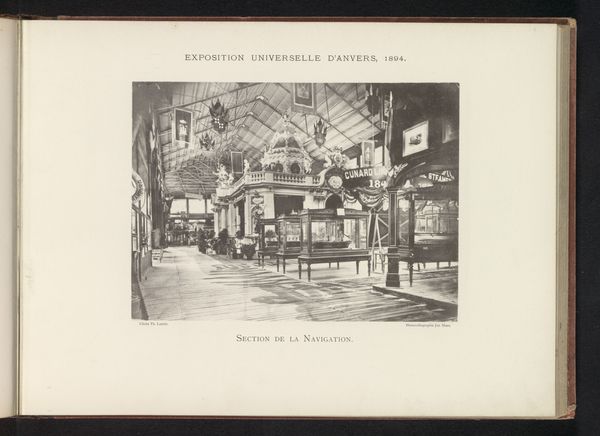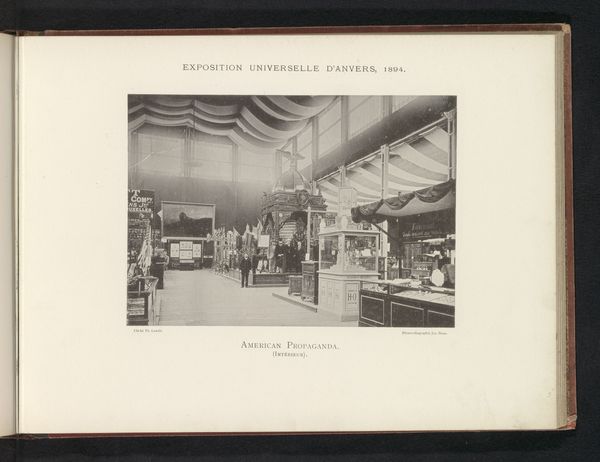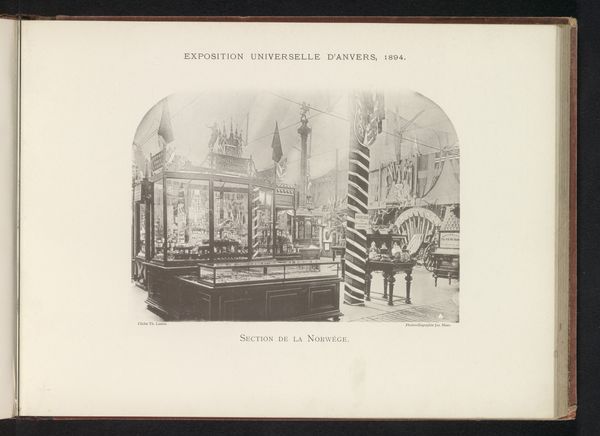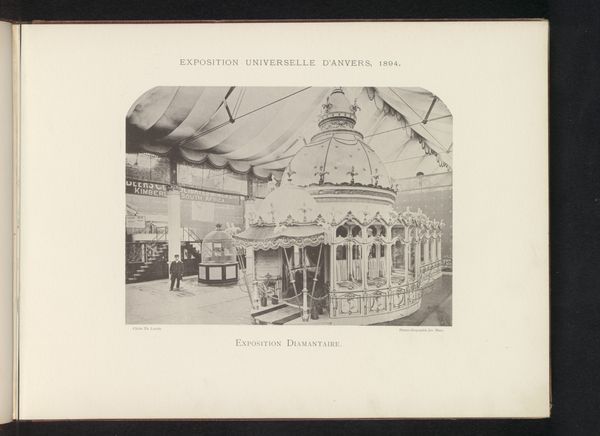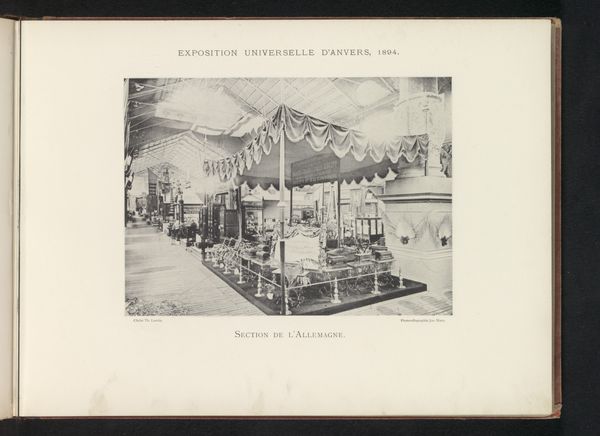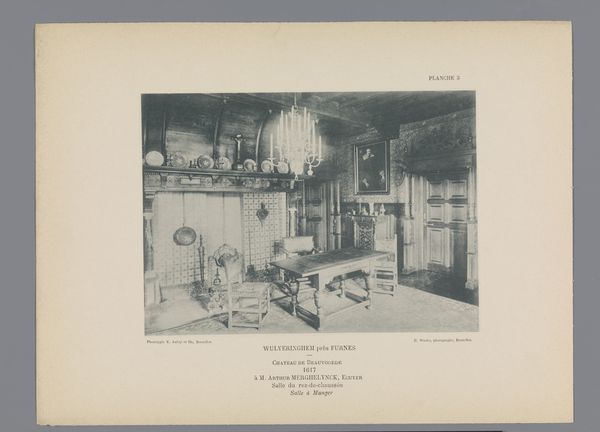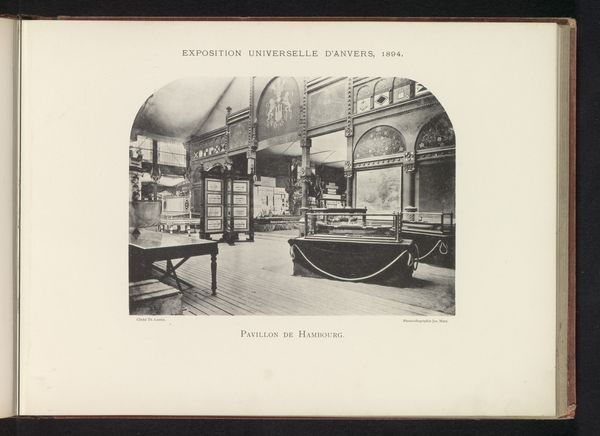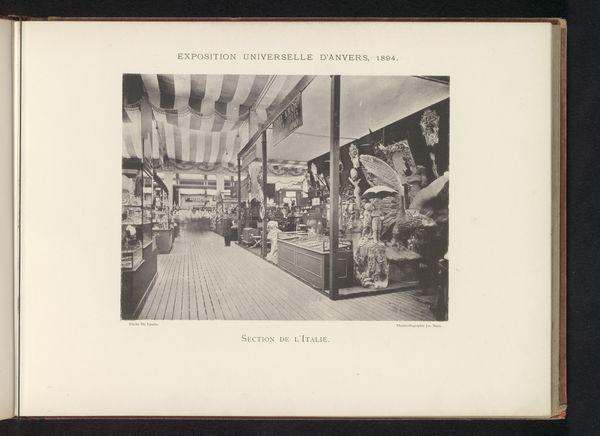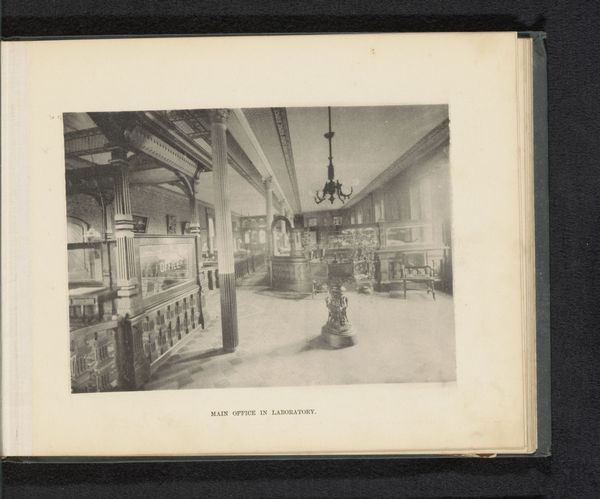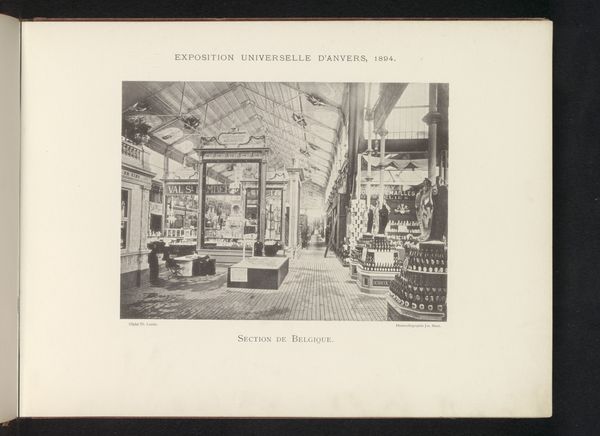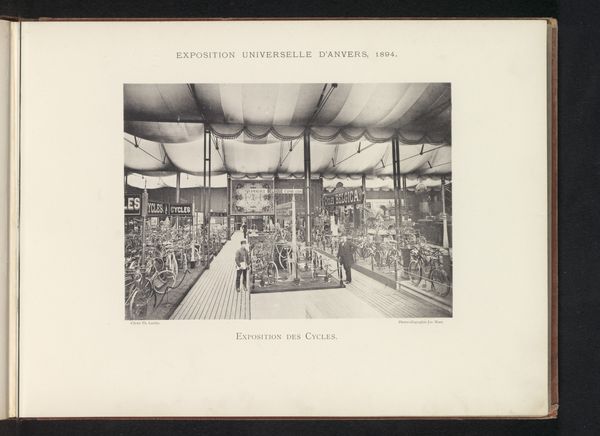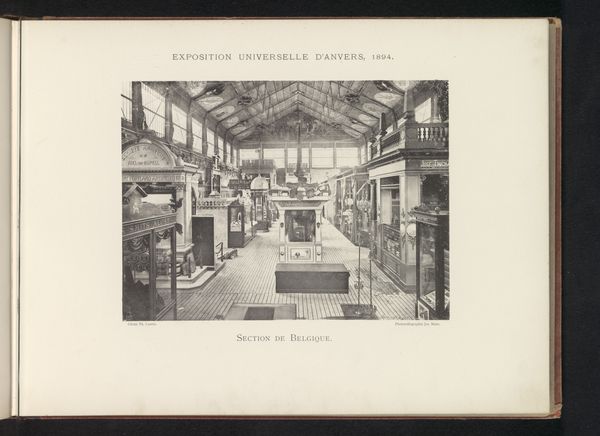
photography
#
photography
Dimensions: height 160 mm, width 218 mm
Copyright: Rijks Museum: Open Domain
Curator: Looking at this print titled "Expositie van scheepsmodellen tijdens de wereldtentoonstelling te Antwerpen" – or, "Exhibition of ship models during the world exhibition in Antwerp," created in 1894 by Th. Lantin, one immediately gets a sense of late 19th-century industrial ambition, don't you think? Editor: Absolutely, it evokes such a feeling. There's a solemn, almost hushed atmosphere suggested by the monochromatic tones and the rows of meticulously displayed models. It hints at the era's confidence in maritime power. Curator: Right, and when we think about that maritime power, we need to think about who built the boats, what materials they were constructed from, where were they produced and with what kind of funding, who purchased the model, and why? This photo captures the moment where commodity display intersects with empire and all the hidden labour it contains. Editor: It does indeed. It also reminds us of how these world exhibitions served to glorify progress, specifically, they highlighted the dominance of colonial powers while often marginalizing or completely erasing the perspectives and contributions of colonized peoples. You can see here how photography plays a role in the spread of that narrative. Curator: Yes, consider the role of the glass display cases. They physically separate the object from the viewer. I’m immediately curious as to how many labourers it took to produce one glass display case as it clearly signifies something that common workers would never own themselves. I would ask, where's the agency here in making and producing for labourers. What impact would photographing and circulating images of display cases such as these had upon workers or people of differing classes. Editor: Interesting. From a social perspective, photographs like these acted as powerful tools in constructing national identity. The carefully arranged ship models served not just as demonstrations of engineering prowess but as symbols of national pride and global reach. Each displayed item serves as a testament to the narrative being pushed to create national fervor. Curator: Absolutely, it's easy to fall into the visual spectacle without interrogating the labor, capital, and production processes that are deeply embedded within the spectacle itself. Editor: Looking closer, I can see the photograph as a form of subtle, but determined advocacy to change what the viewer believes about their position within the empire. The very act of looking becomes a part of that relationship and reminds one to think deeper about how to change social and material circumstances within that period. Curator: Absolutely, it's like looking at a portrait that asks just as many questions as it seems to answer at first glance. Editor: Precisely! A frozen moment ripe with industrial fervor but that simmers with untold stories of labor, dominance and empire.
Comments
No comments
Be the first to comment and join the conversation on the ultimate creative platform.

